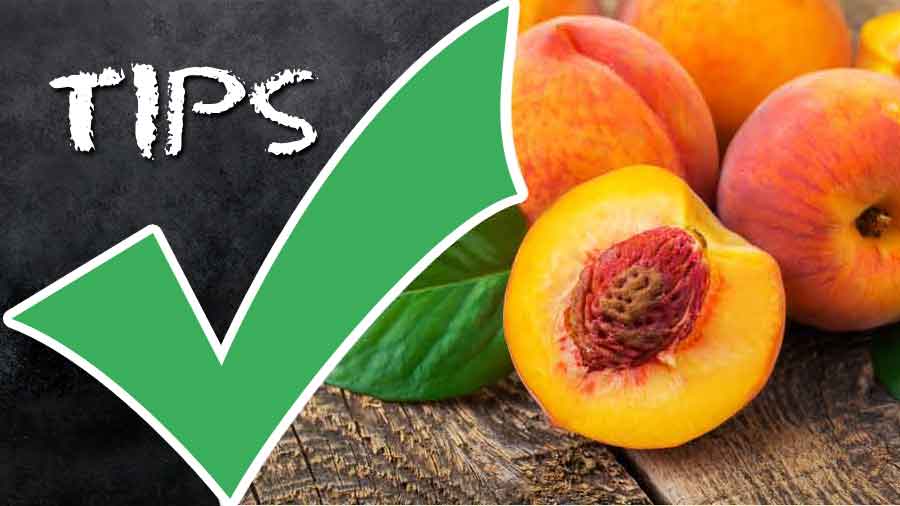Peaches and nectarines are among the most delicious summer fruits. Nectarines are at their peak between June and September. Peaches need plenty of sun to ripen them and grow in France, Spain and Italy. There are yellow-, pink- and white-fleshed varieties, with velvety skin. Nectarines are smooth-skinned, with all the luscious flavor of peaches. They also come in yellow and white varieties and, like peaches, the white nectarines have a finer flavor. The red blush on nectarine skins is related to variety not ripeness.
Peaches; are diuretic and laxative, alkaline fruits which are easily digested and with excellent cleanser properties for the kidneys and bladder. White peaches are sweeter, yellow ones are more fragrant.
How to Choose Peaches and Nectarines
Choose fresh peaches that are firm to slightly soft when pressed. Skin color varies from golden yellow to dark reddish-brown, but the peaches should have no tinges of green. Look for well-shaped fruit without blemishes or soft spots. Look for fruit with a healthy golden yellow skin without tinges of green. Ripe nectarines should yield slightly to gentle pressure. Don’t buy bruised or misshapen fruit. Peaches are in season during the Mediterranean summer. Make sure they are ripe, but not too soft, with unwrinkled and unblemished skins. Look for bruise-free specimens that just give when squeezed gently. They should have a sweet, intense scent. Peaches and nectarines bruise very easily, so try to buy those that have been kept in compartmented trays rather than piled into baskets.
How to Ripen and Store Peaches with Nectarines
- Nectarines are picked mature but firm for shipping. Complete the ripening at home by placing them in a loosely closed paper bag for several days at room temperature.
- Keep ripe nectarines in the refrigerator for 3 to 5 days. Do not keep peaches and nectarines for more than a day or two.
- If they are very ripe, store them in the fridge. Ripen firm peaches at room temperature until they’re slightly soft, then refrigerate the ripe fruit for up to 5 days.
How to Serve Peaches and Nectarines
A nectarine or peach makes the perfect dessert, either fresh or baked. Some people prefer nectarines to peaches as a dessert fruit because they do not require peeling. Peaches and nectarines are interchangeable in cooked dishes. They can both be macerated in fortified wine or spirits or poached in white wine and syrup. They also go well with almonds.
Peaches are also delicious served with raspberries, or made into fruit drinks and ice creams and sorbets.
NUTRITION FACTS
Amount per 100 grams of peaches
Calories 39.0 kcal
Total Carbohydrate 9.9 g
– Dietary Fiber 1.5 g
– Sugars 8.4 g
Vitamin A 326 IU
Vitamin C 6.6 mg
Vitamin E 0.7 mg
Niacin 0.8 mg
Pantothenic Acid 0.2 mg
Choline 6.1 mg
Calcium 6.0 mg
Magnesium 9.0 mg
Phosphorus 20.0 mg
Potassium 190 mg
Fluoride 4.0 mcg

